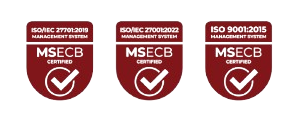In the SIM registration sphere, pictures are considered important, and that is why there are rules and specifications a captured image must obey or meet for it to be accepted as good. One of such is that a picture must have a uniform and undisruptive background that doesn’t distract attention away from the picture.
To achieve this, one would need to get all subscribers to take their pictures in front of a plain backdrop. But this isn’t always possible as it removes the flexibility factor, leading to a stressful onboarding which might discourage people. A better way to do it is to have a platform that does something called a background clean up.

What is background clean up and why?
Background clean-up basically involves identifying a foreground (in this case a human) and extracting the background, usually with the aim of replacing the background with a plain white colour.
Biosmart as a robust portal that enables SIM registration with utmost compliance, leverages this capability to further optimize the SIM registration process. The idea is to enable users to capture images on different backgrounds and still ensure the captured images end up having a steady background. The reason is to help reduce clients’ worries over noisy backgrounds and also make the data capture uniform, all in a bid to enforce regulatory compliance.
On BioSmart, this feature sits well on a Deep Learning Model of Object Segmentation to analyze the background of an image, carefully crop out the non-uniform background and impose a plain white background without impacting the picture of the user. This takes effect immediately an image is captured.
Besides the obvious benefit of allowing for a uniform and a globally compliant image capture, this feature also automates the entire business process by increasing the pace at which the team of agents carry out biometric capture for faster customer onboarding.
This feature can also be used in an offline mode so users do not need to worry about picture quality during registration in locations with poor internet connectivity.








